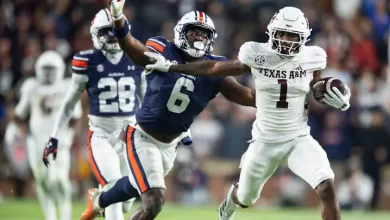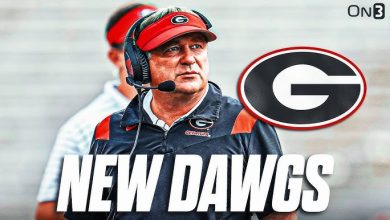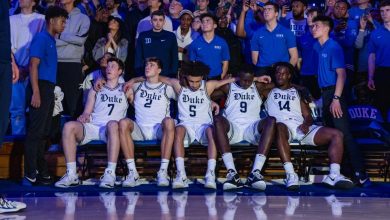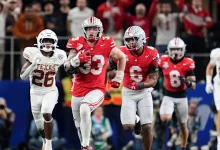Players are eligible to receive direct payment from schools
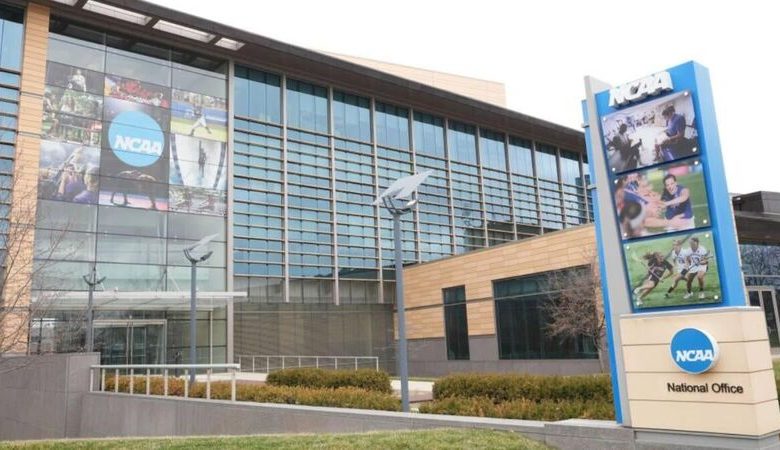
In a historic shift that has reverberated across college sports, the landscape of college athletics has been permanently altered. For the first time ever, college athletes will be eligible to receive direct payments from their schools. This groundbreaking move is a monumental step forward in the evolution of college sports, redefining how student-athletes are compensated for their time, talent, and contributions. This change marks a new era in college sports, one where the financial dynamics of the collegiate athletic world are set to experience a significant shift.
The impact of this decision goes beyond the athletes themselves. It will shape the future of college sports, redefine the role of coaches, administrators, and programs, and potentially change the way we view collegiate athletics as a whole. No longer will athletes be limited to just scholarship funds and NIL (Name, Image, and Likeness) deals. The new rule enables schools to make direct financial contributions to their athletes, a move that has been highly anticipated for years and will undoubtedly create a ripple effect throughout the sports industry.
With this historic change, many questions arise: How will these direct payments be structured? What are the financial and legal implications for schools, athletes, and the NCAA? And most importantly, what does this mean for the future of college sports? In this article, we’ll break down the details of this new rule, how it will work, and the potential ramifications for everyone involved.
For many years, college athletes were limited in terms of compensation. They could receive full scholarships, which covered tuition, room and board, and sometimes books and fees, but they were not allowed to receive any additional payment for their athletic performance. In fact, the NCAA long enforced strict rules that prohibited athletes from receiving any form of payment beyond their scholarship, arguing that college sports should remain “amateur” in nature.
However, as the commercialization of college sports exploded, particularly with the rise of television deals, massive sponsorship contracts, and the billion-dollar industry of college football and basketball, the debate over athlete compensation intensified. The sheer volume of money involved in college sports created an obvious imbalance between the revenue generated by athletes and the compensation they received.
The turning point came with the advent of NIL (Name, Image, and Likeness) rights in 2021, when the NCAA voted to allow athletes to profit from their personal brand by signing endorsement deals, receiving sponsorships, and engaging in other revenue-generating opportunities. While NIL rights were a significant win for athletes, they did not solve the larger issue of direct payments from schools.
The new rule, which now allows for direct payments from schools to players, is a direct response to these concerns. The NCAA, along with various conferences, schools, and stakeholders, began to reconsider the framework for compensating athletes as the business of college sports became too large to ignore. This new ruling is seen as a way to address the growing financial disparity and create a more equitable system for athletes at the collegiate level.
So, how exactly will this new rule work? The direct payments from schools to athletes will be structured in a way that ensures fairness, transparency, and compliance with NCAA regulations. While the specifics of the program are still being refined, the general framework is as follows:
1. Payment Structure
Schools will be allowed to make direct payments to athletes, but these payments will be contingent upon specific criteria. The exact amounts and frequency of the payments will vary depending on the sport, the athlete’s role, and the program’s financial situation. However, there are certain guidelines that will help standardize the process across the board.
- Athlete Type: Different sports and athletes will receive different levels of compensation. For example, football and basketball players, who generate the most revenue for schools, will likely receive higher direct payments compared to athletes in less commercially prominent sports.
- Performance-Based Payments: Some schools may tie payments to an athlete’s performance on the field or in competition. For instance, athletes who contribute significantly to their team’s success or achieve certain milestones (such as All-American honors, conference championships, or individual accolades) could receive additional financial incentives.
- Scholarship Enhancement: Schools may also choose to enhance existing scholarship packages with additional payments. These payments will be designed to help offset costs that are not covered by traditional scholarships, such as living expenses or other financial burdens.
- Collective Agreements: Many programs will likely form collective agreements, where a group of athletes across a particular sport or team can receive uniform payments, based on factors like seniority or overall team success.
2. Compliance with Title IX
A crucial aspect of these direct payments will be ensuring compliance with Title IX, the federal law that mandates gender equity in college athletics. Schools will need to ensure that their payment structures are balanced and fair between male and female athletes. This means that if football players are receiving direct payments, similar compensation structures will need to be put in place for female athletes in sports like basketball, soccer, and volleyball, ensuring equal opportunity and financial support across the board.
3. The Role of the School’s Athletic Department
Athletic departments will play a critical role in distributing payments to athletes. The NCAA will likely create an oversight body to monitor and ensure that schools are complying with the rules. The athletic departments will also be responsible for maintaining transparency and ensuring that payments are distributed fairly and in compliance with all regulations.
4. Payments and the NCAA’s Role
The NCAA will still have oversight of the rules governing these payments, ensuring that the payments are not tied to recruitment or inducements. Schools will not be able to offer athletes a contract before they arrive on campus, and the payments will be structured as a reward for being on the team rather than a recruitment tool.
The legal and financial implications of this new rule are far-reaching, and there are many aspects that need to be considered. Schools will have to navigate complex tax laws, financial reporting, and compliance issues as they begin to make direct payments to athletes. Here are some of the key factors that will come into play:
1. Taxation
Just like NIL earnings, direct payments to athletes will be considered taxable income. Athletes will be required to report their payments on their tax returns, which could lead to additional tax obligations. Schools will need to provide athletes with the necessary paperwork (such as 1099 forms) to report these payments, and athletes may need to work with financial advisors to ensure that they are complying with tax laws.
2. Financial Fairness
This rule introduces the potential for greater financial disparity between schools in wealthier programs and those in smaller or less financially stable conferences. Schools in the SEC, Big Ten, and other power conferences could have far greater financial resources to offer lucrative direct payments, creating a larger gap between programs. This may raise concerns about competitive balance and the potential for “super teams” to emerge in college sports.
3. Compliance and Auditing
As part of the new payment structure, schools will be required to undergo audits and compliance checks to ensure they are abiding by the rules and regulations surrounding athlete payments. Schools will need to maintain strict documentation regarding how payments are made and to whom, to ensure that no irregularities or violations of NCAA rules occur. Independent auditing firms may be used to ensure transparency.
4. Impact on Scholarships and Other Financial Aid
One concern that has been raised is how direct payments will interact with existing scholarship packages and other financial aid opportunities. Schools may have to recalibrate their scholarship offers to ensure that payments are not double-dipping or violating the maximum allowable compensation limits under NCAA rules.
The introduction of direct payments for athletes represents a seismic shift in the world of college sports. This move is likely to have far-reaching consequences for the structure of collegiate athletics, recruiting, and the overall relationship between schools and athletes. Here are some potential ramifications:
1. Recruiting Landscape
Direct payments are likely to change the recruiting landscape, as athletes will now have more financial incentives to choose one program over another. Schools with larger budgets and better financial backing may be able to offer more substantial payments, which could alter the dynamics of recruiting. Smaller schools may struggle to compete with the big power programs in terms of compensation, which could lead to greater disparities in talent distribution.
2. Professionalization of College Sports
The introduction of direct payments blurs the line between amateur and professional athletics. While athletes will still be required to maintain their eligibility as students, the shift toward financial compensation will continue to move college sports closer to the model of professional leagues. The debate over whether college athletes should be considered amateurs or professionals is unlikely to subside anytime soon.
3. Equity and Fairness
While the new rules may help address compensation inequities between athletes and the schools that profit from their performance, the issue of fairness and equitable distribution of wealth will remain a concern. Schools will need to balance their efforts to reward their most prominent athletes while ensuring that all athletes, regardless of sport, are treated fairly and equitably.
4. Long-Term Financial Impact
Finally, the long-term financial impact of these direct payments on college athletics is still unknown. Schools may face challenges in balancing their budgets, and the NCAA may need to implement additional oversight and regulations to prevent abuses and ensure that payments are sustainable. However, it is clear that the era of college athletes being compensated exclusively through scholarships is over, and a new era of financial opportunities for athletes has begun.
The historic decision to allow direct payments to college athletes is a watershed moment in the evolution of college sports. While the mechanics of how these payments will be implemented are still being refined, it is clear that the structure of college athletics is changing for good. This move is a game-changer, creating new opportunities for athletes, schools, and the industry as a whole.
The implications of this new rule will continue to unfold over the coming months and years, but one thing is certain: the financial landscape of college sports will never be the same again.



